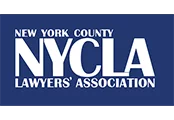Generally, the terms unlawful imprisonment and false imprisonment are interchangeable, although each jurisdiction selects which term to use. In the New York legal system, we go with unlawful imprisonment, which is defined as illegally holding an individual against his or her will. Many people confuse unlawful imprisonment with false arrest, which is a completely different crime in itself. Unlawful imprisonment does not require an arrest at all.
Defining Unlawful Imprisonment in the First Degree
Under New York Penal Law § 135.10, one is guilty of unlawfully imprisoning someone when they prevent another individual from leaving a confined space. This may include a room, vehicle, or a building of any type. Additionally, the attempt to confine someone’s movements in this way must also put the individual in harm’s way.
Under New York law, there are two types of unlawful imprisonment. Second degree unlawful imprisonment only requires that a perpetrator restricts another’s freedom in the manner described above, but without risking that individual’s safety. Once the imprisonment poses a risk of causing bodily harm, the charge of unlawful imprisonment in the first degree will apply.
For the purposes of clarifying its laws, there are certain terms that are defined for use in the legal system. In New York Penal Law § 135.00, the state takes the time to define the word restrain as it is used in the unlawful imprisonment laws. For these purposes, to restrain someone requires that an individual “intentionally, unlawfully, and substantially” restricts the movements of someone else.
Defending Against a Charge of Unlawful Imprisonment in the First Degree
First degree unlawful imprisonment occurs more often than people realize. In one example, suppose Brad meets Susie in a bar and offers her a ride home. Although Susie is providing Brad with directions to her home, he drives them to a secluded area. As Brad parks the car, Susie tries to open her door to leave. When Brad stops her and uses a knife to scare her into staying, he has committed unlawful imprisonment in the first degree. Since Susie was afraid that Brad intended to physically harm her, she felt compelled to remain in the car.
In order to prove a case of unlawful imprisonment in the first degree, the prosecution must be able to prove each element of the crime. By the same token, being able to disprove the elements of the crime is the best way to defeat a charge of first degree unlawful imprisonment.
For instance, if the defendant can show that the victim of the crime had the ability to leave the area at any time, this could disprove a charge of unlawful imprisonment altogether. Alternatively, showing that the knife or other weapon was only a toy or harmless facsimile can disprove the element of threatening harm. In that case, the defendant may be able to claim the threat was merely a prank that got out of control.
Unlawful imprisonment in the first degree is a class E felony under New York law. Class E felonies carry a penalty of up to four years in prison, although sentencing guidelines also allow for a minimum sentence of five years of probation. When determining sentencing, the judge will likely look at the facts of the case and the defendant’s criminal history.
If this is a first offense or there are other mitigating factors in favor of the defendant, he or she may only receive a sentence of probation. However, someone with a history of violent criminal behavior may not receive leniency. In that case, the individual may be sentenced to the full four years of imprisonment.
The seriousness of this crime cannot be understated. If you have been charged with unlawful imprisonment in the first degree, your first priority should be to consult an experienced criminal defense attorney. A lawyer skilled in handling these types of cases will help you achieve the best possible outcome. Hiring an attorney may even help you avoid prison time, depending on the circumstances of your case.


















